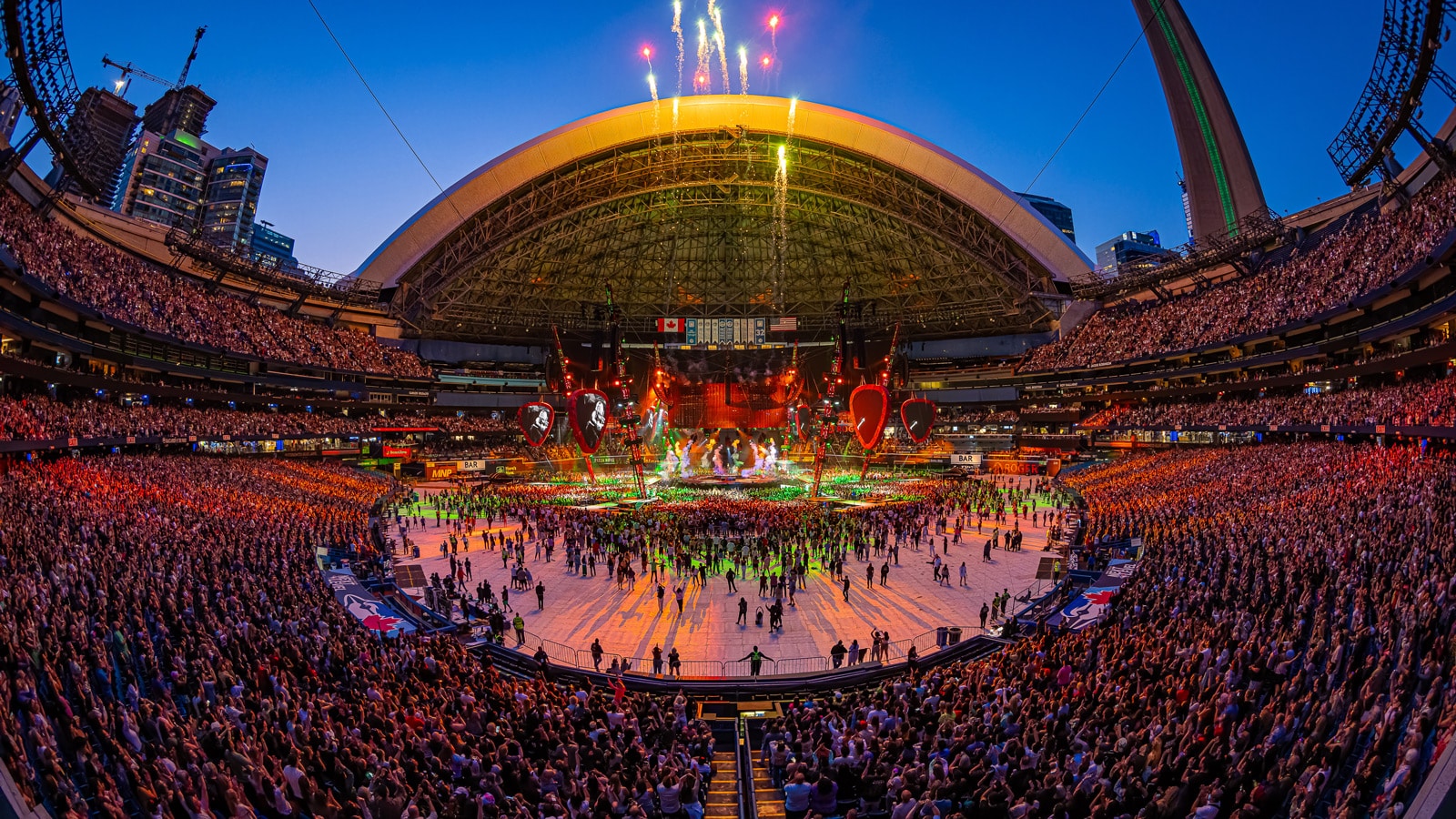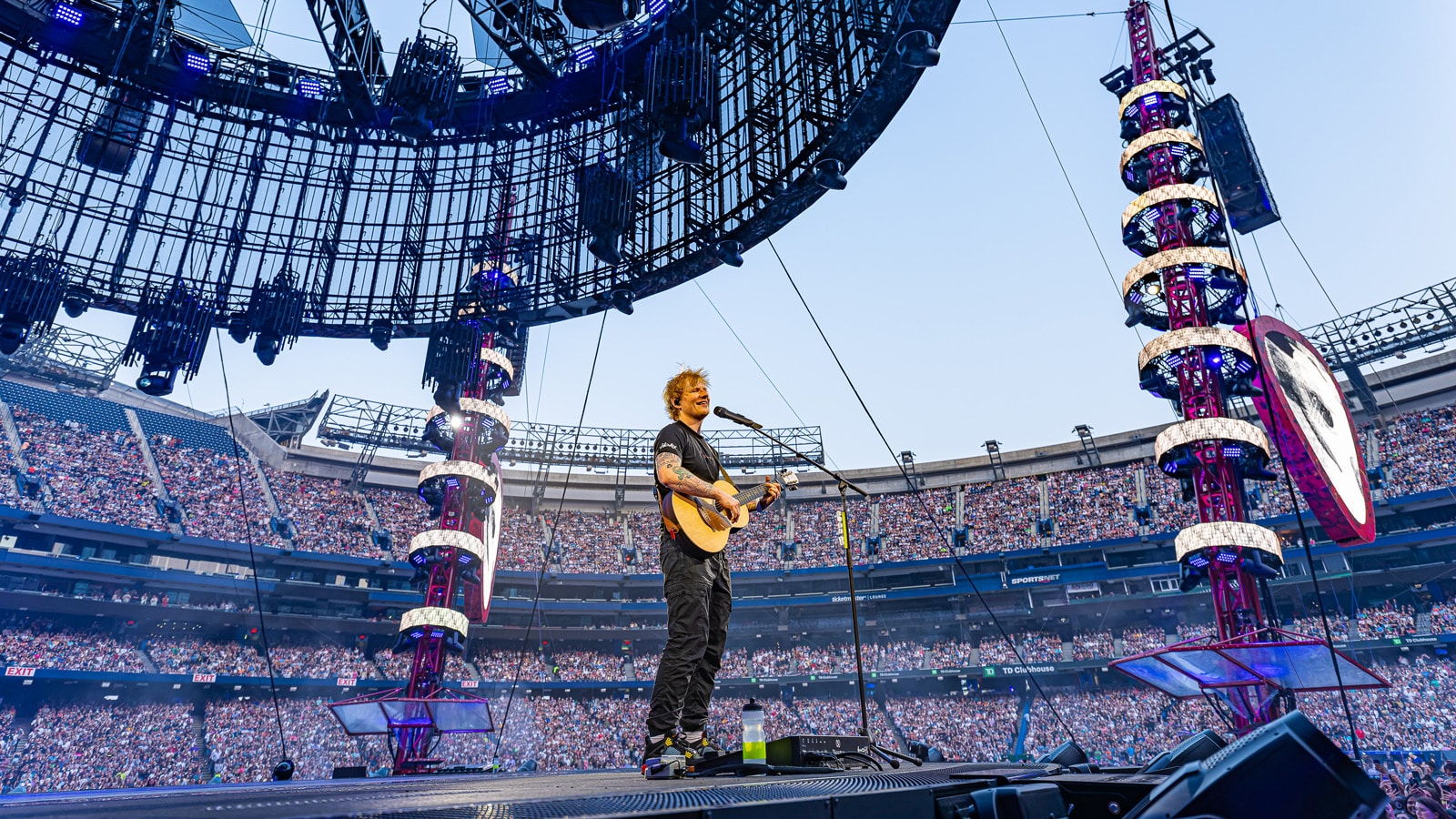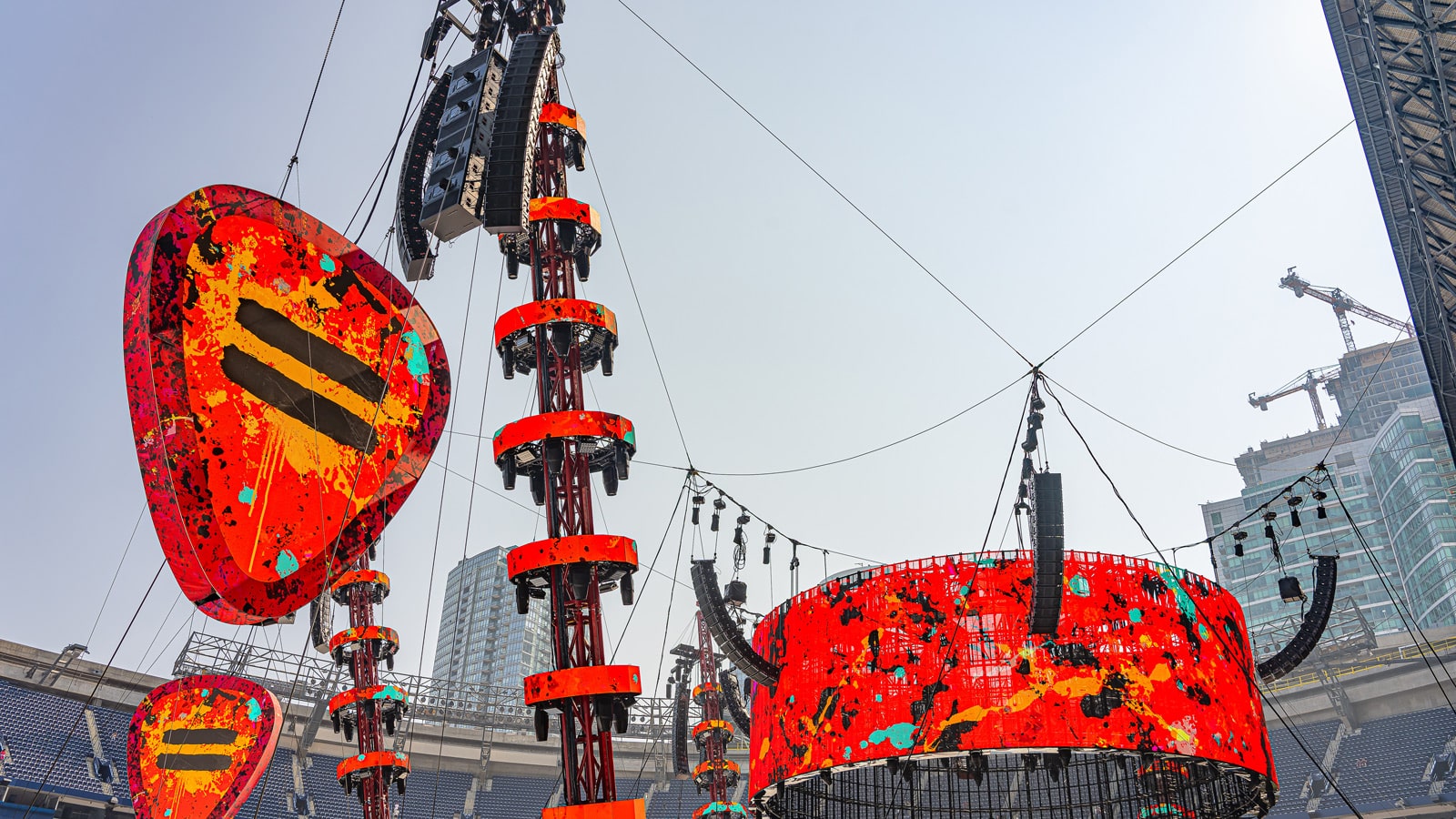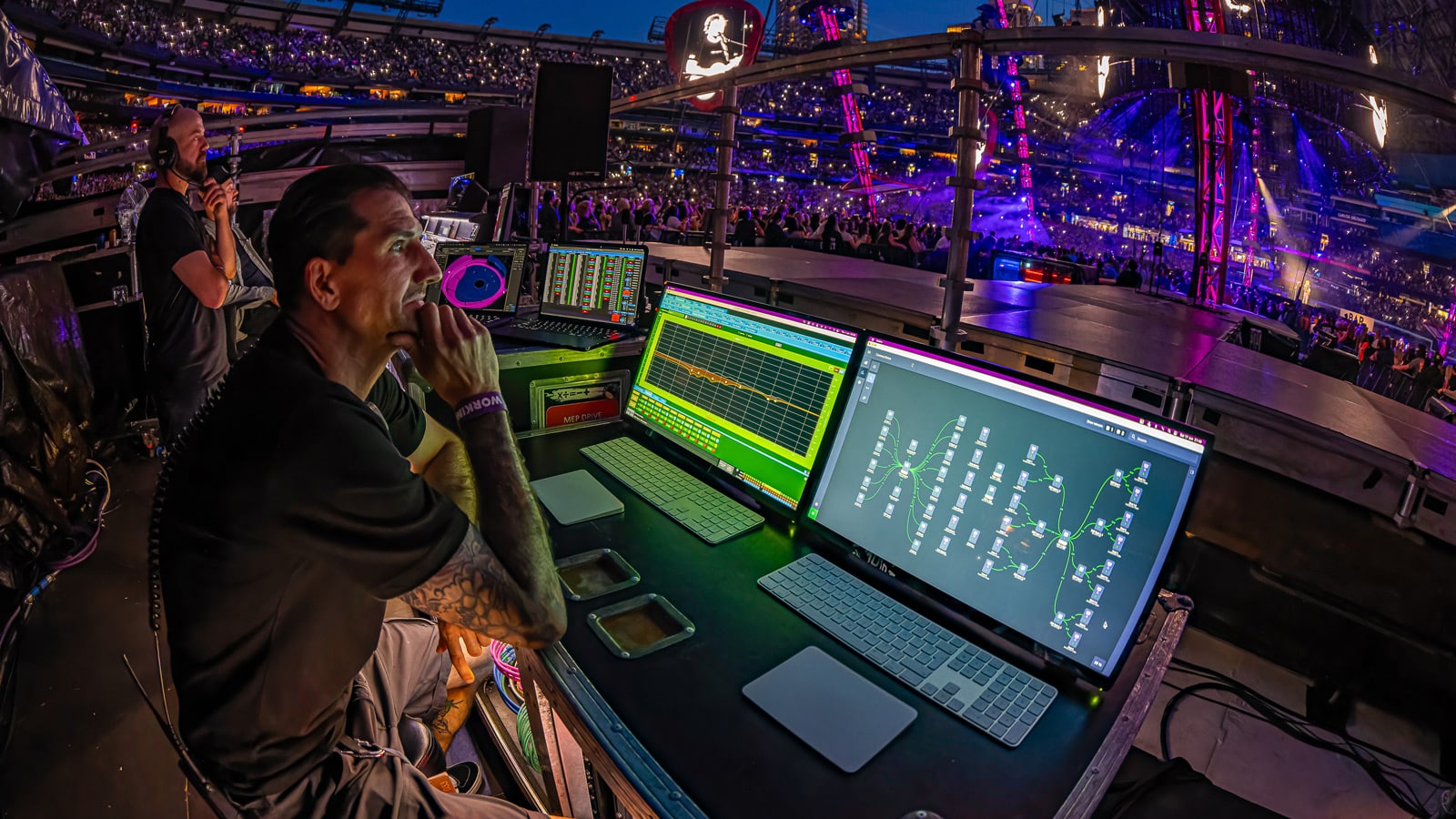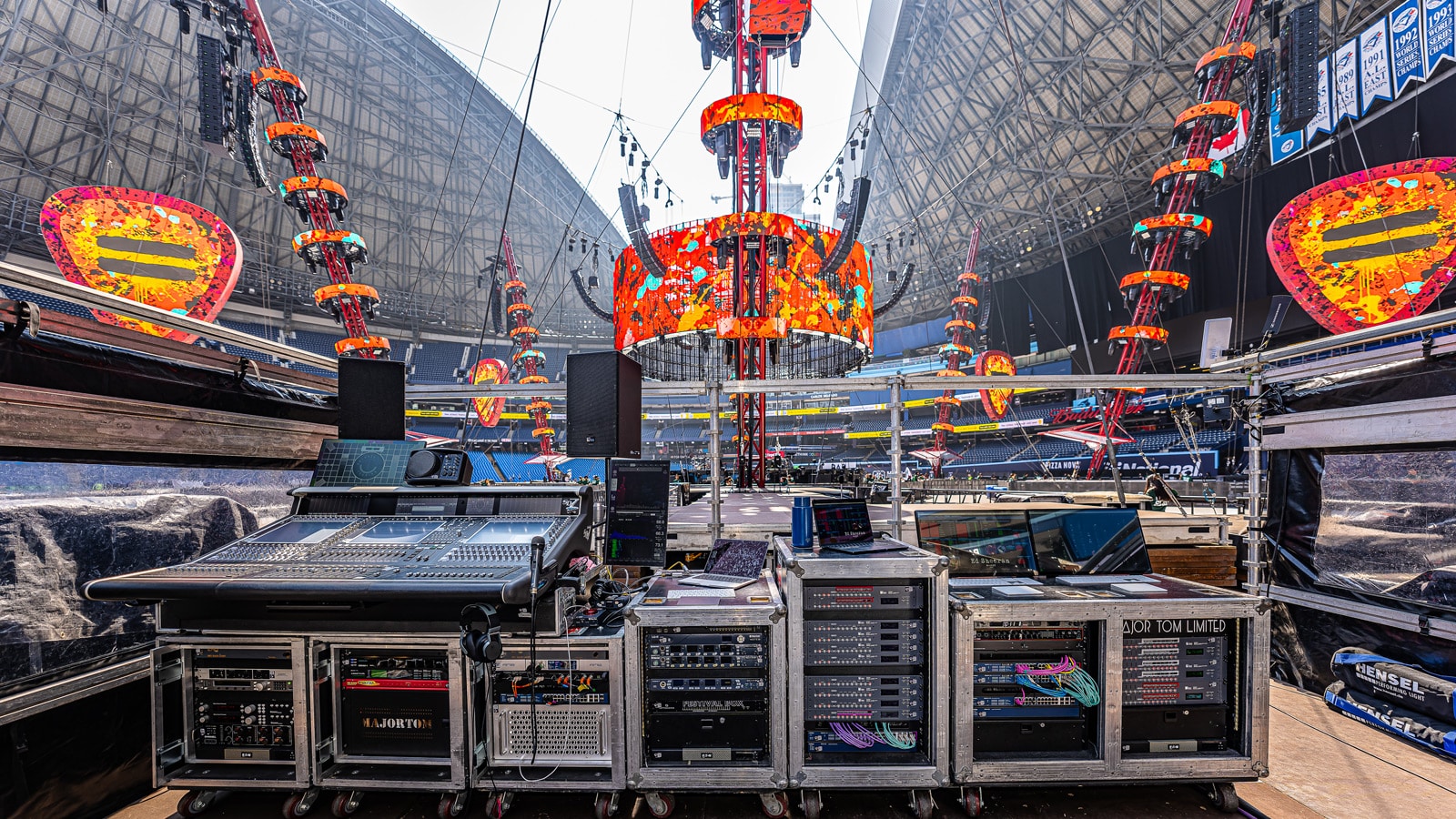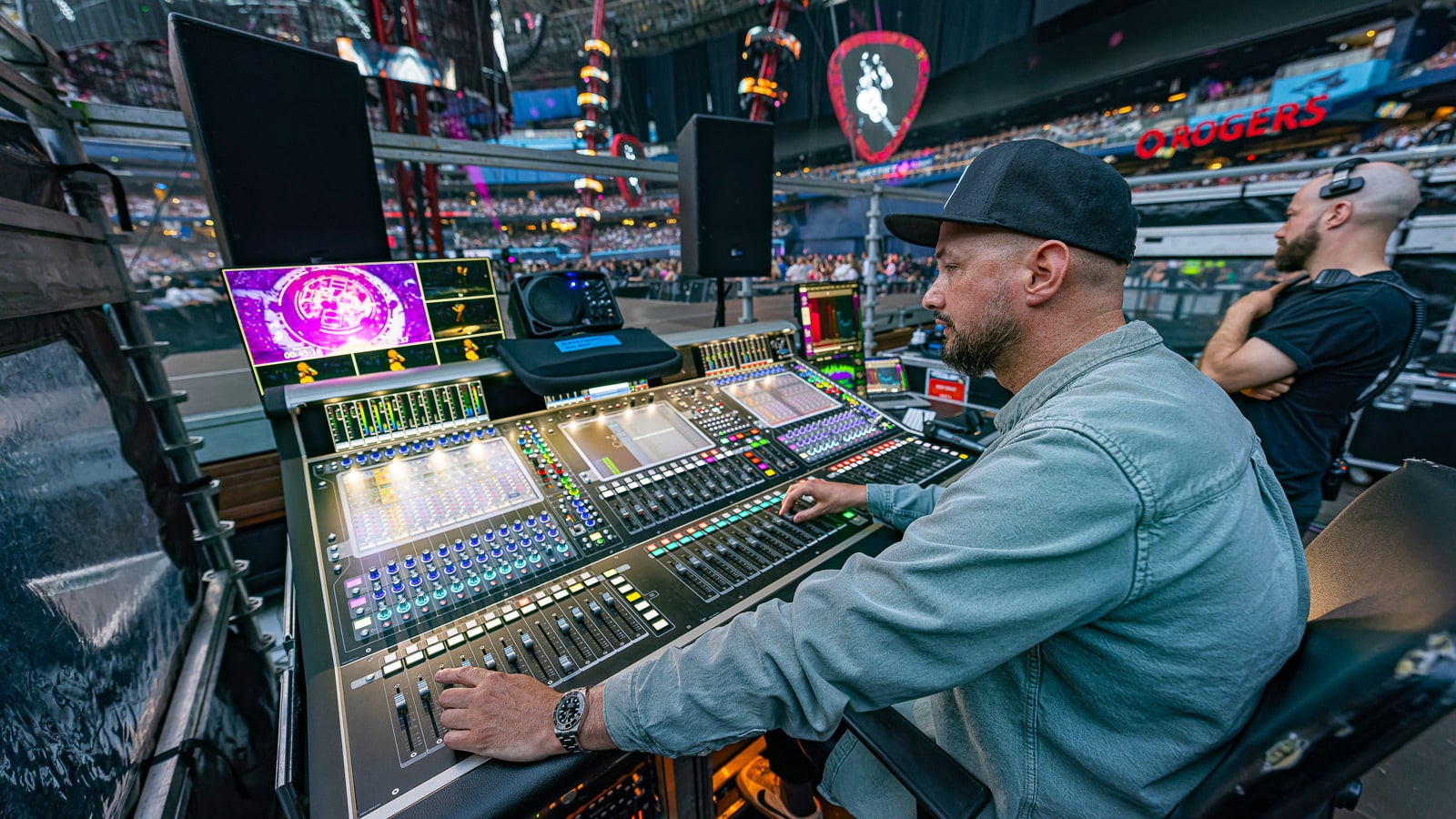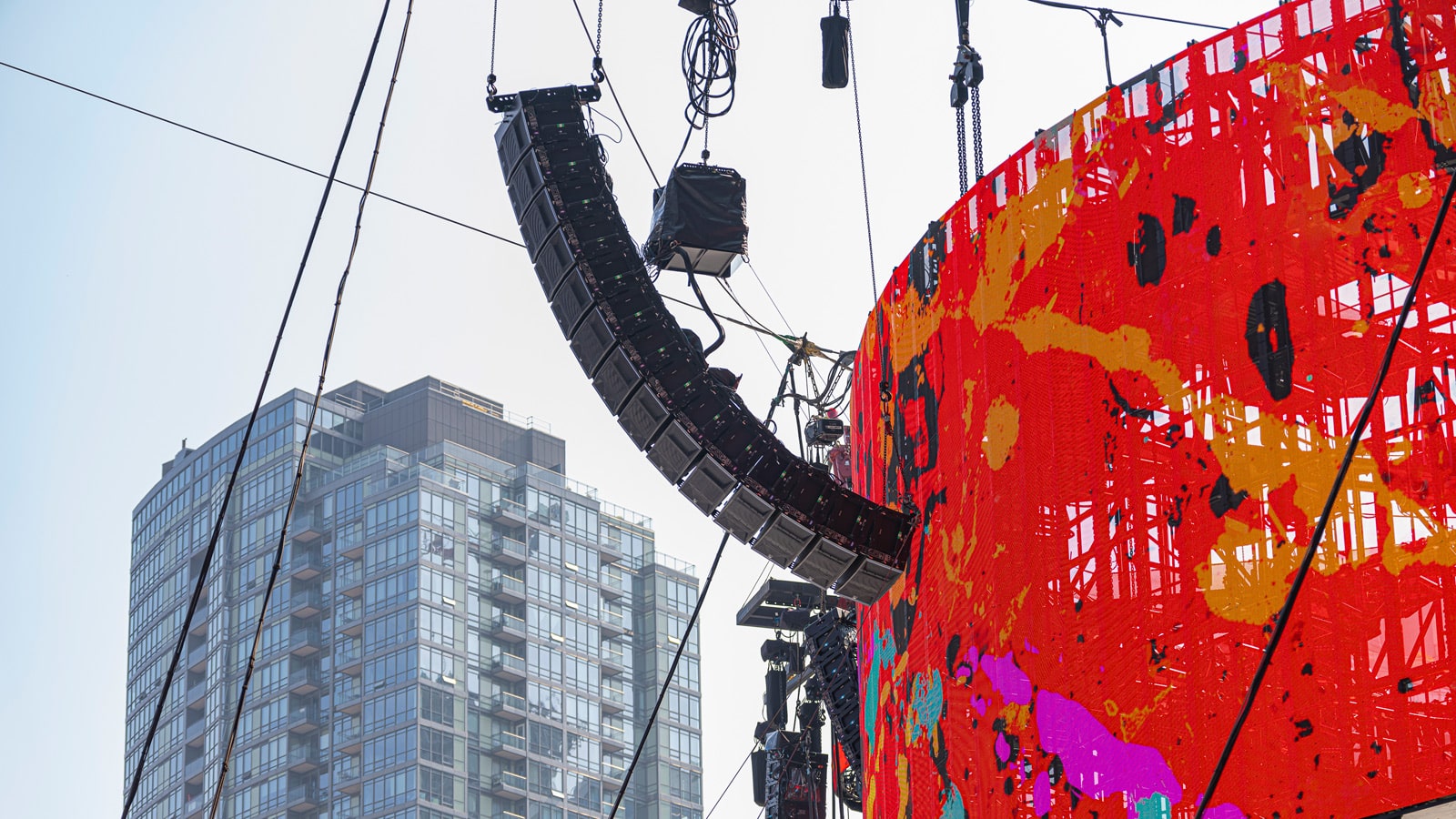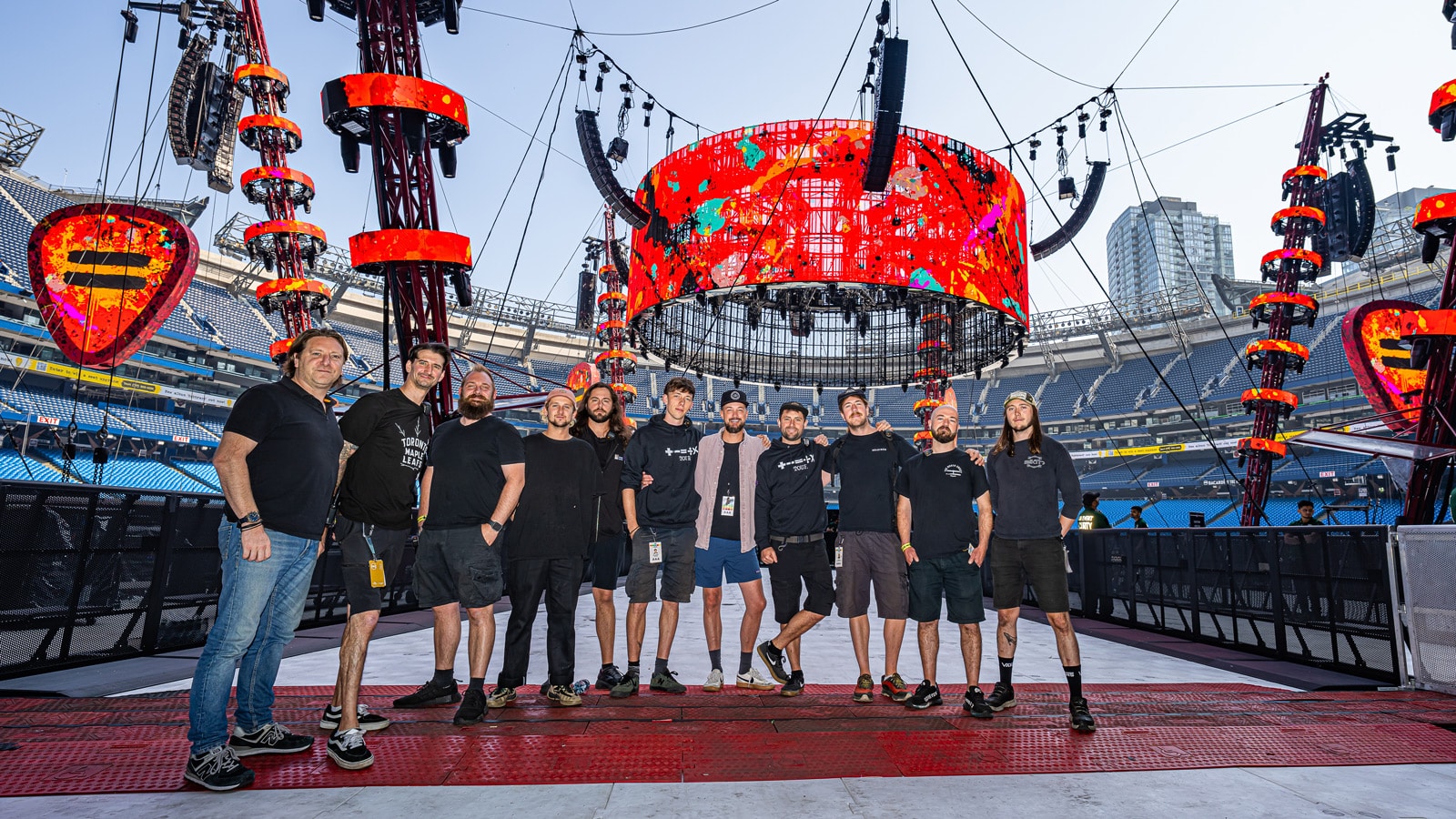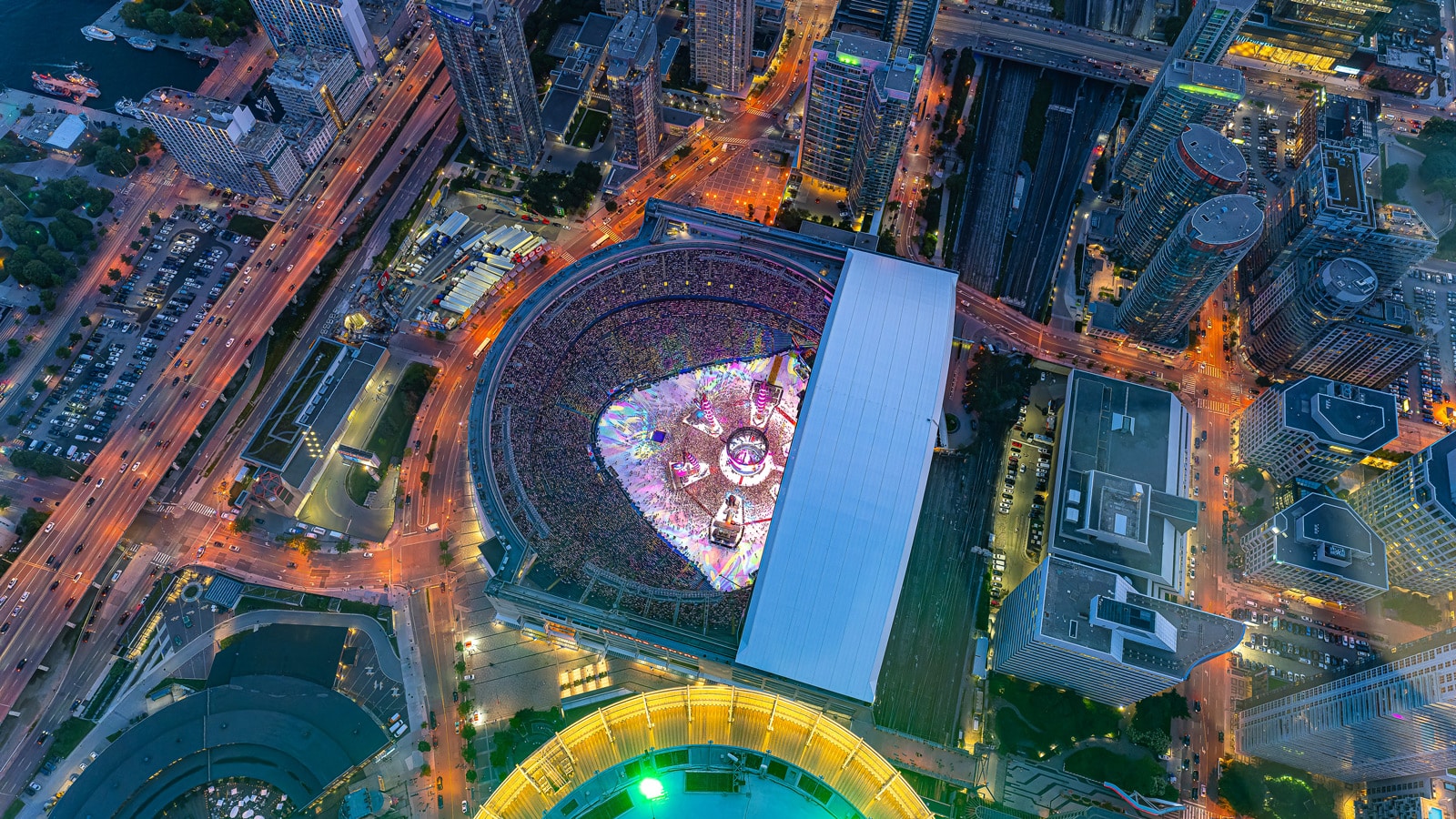The network has been rock solid, and we’ve used Milan AVB as our primary input since early in the European leg. With so many new elements in play, we decided to err on the side of caution and use the analog inputs while closely monitoring the Milan network. We quickly gained faith in its reliability and stability, switched over, and we have been very comfortable with it ever since.”
Adam WellsSystem Engineer
Ed Sheeran’s monumental “+ – = ÷ x” (“Mathematics”) Tour has delighted more than 4.5 million fans across three continents since it launched in Dublin on April 23 of last year. Putting on a great show is the overriding goal, of course, but as a secondary benefit, the tour has been a valuable proving ground for advanced sound reinforcement technologies. The tour was the first to carry Milan AVB networked signals from FOH mix through to the individual loudspeaker boxes — in this case, 212 PANTHER large-format linear line array loudspeakers from Major Tom, Ltd. The tour also has been a test bench for Meyer Sound’s new Nebra software platform for network configuration and system monitoring, while MAPP 3D prediction software has streamlined the task of realigning coverage for varying stadium shapes and sizes.
“The network has been rock solid, and we’ve used Milan AVB as our primary input since early in the European leg,” says System Engineer Adam Wells. “With so many new elements in play, we decided to err on the side of caution and use the analog inputs while closely monitoring the Milan network. We quickly gained faith in its reliability and stability, switched over, and we have been very comfortable with it ever since.”
As both inputs are always active, the analog backup remains in place. But, based on their experience, Wells sees the transition to an all-network infrastructure on the horizon. “We always will have network redundancy, but eliminating the analog element will drastically reduce the cable packages, and it will also eliminate the need to have loudspeaker processing at the stage end by the arrays. All processors feeding the network can live at front-of-house, which will significantly reduce rack space needed.”
The tour also was among the first to put Meyer Sound’s new Nebra software platform through its paces in a high-pressure environment.
“Nebra has become the backbone of the entire system,” Wells continues. “It is a one-stop shop for monitoring of the loudspeakers and network infrastructure, and for patching AVB signal to the speakers.”
Wells is pleased with the way Nebra facilitates rapid checking of individual loudspeakers and entire arrays and is impressed with the fast and comprehensive monitoring during performance. “Nebra is very refined and efficient in the way it manages network traffic. All 312 loudspeakers, 26 Galileo GALAXY processors, and 49 Luminex switches are named in the software, and I can tell immediately if there are issues with any of them.”
The visually imposing production rig encompasses 14 arrays of PANTHER loudspeakers in two rings suspended from six masts. Deep bass is propelled by 78 1100-LFC low-frequency control elements in flown and ground-stacked gradient arrays. Front fill is supplied by 22 LEOPARD compact linear line array loudspeakers.
Although the touring audio package has not changed since the earlier European and Australia/New Zealand legs, the variations in North American venues have required adjustments. With only one exception, all shows are in NFL stadiums, which means the field will be exactly 360 feet long and 160 feet wide. But there are considerable variations in bowl height, seating rake, and presence of large reflective surfaces. Wells has found the latest iteration of Meyer Sound’s prediction software an invaluable tool in making the adjustments.
“MAPP 3D is the heartbeat of our design process,” he says. “It gives us a seamless transition from design through rigging to optimization. I create a show template, build the venue around it, and then everything translates directly into the processing once we get to the stadium.”
Wells notes that the initial design stage often varies with the age of the venue. “With older stadiums, like FedEx Field in Washington, where it’s still a manual process of measuring onsite and drawing in MAPP 3D from scratch. But with new stadiums, like SoFi in LA, I can get a 3D model that drops right into MAPP 3D.”
Ed Sheeran’s right-hand man for all things technical since his earliest touring days has been Chris Marsh, who serves as both production director and primary FOH engineer. He has found the transition to North American stadiums to be a mixed bag.
“From an audio perspective, compared to European stadiums, I generally find the American counterparts easier to mix in,” he says. “Most are more open, with few fully enclosed, and that helps with reflections which keep the mix tighter. That said, there seems to be a competition in American stadiums to have the biggest video walls, and these are not audio-friendly!”
American stadiums also tend to be taller, however, which means some short side throws for in-the-round configurations. “Thanks to the light weight of PANTHER, we could design the show to handle that situation,” Marsh continues. “I’m quite sure there is not another show where you can fly your PA at 27 meters, which is essential for optimum coverage of the highest back seats.”
The tour is also adapting smoothly to key personnel changes. Wells assumed the system engineer post when long-time SE Charlie Albin left the tour to be at home with family — and take a post as technical services specialist for Meyer Sound in the UK. Also, after 12 years of partnership in creating the concert sound of Ed Sheeran, Chris Marsh is turning over occasional stints at FOH mix to Simon Kemp.
“I’ve known Simon since he was a young lad, and he has worked with me at Major Tom since he left university,” says Marsh. “I decided it was time to hand over the reins of mixing in some circumstances so I can focus on the enormity of the overall production. I also thought it was a good juncture to get fresh ears and ideas into the mix, quite literally.”
Marsh and Major Tom founder/owner Lars Brogaard were major contributors to the conceptual design of PANTHER, a loudspeaker that has proven phenomenally successful worldwide. “It’s been exhilarating to have been part of the evolution of PANTHER, and to have it for the debut tour,” he reflects. “Seeing it get so much attention, and garner rave reviews from other PA companies and touring engineers, has given me a sort of paternal pride, I suppose.”
By the end of the North American leg, Ed Sheeran’s “Mathematics” tour will have logged 89 shows in 49 cities, with total ticket sales as of late June surpassing 4.5 million. Tour stops have stretched from Helsinki, Finland to Perth, Australia. Perhaps appropriately, prior to the current leg’s next-to-last show in Santa Clara, CA, the nomadic PANTHER loudspeakers will pass within a few miles of their beginnings at the Meyer Sound factory in Berkeley.

